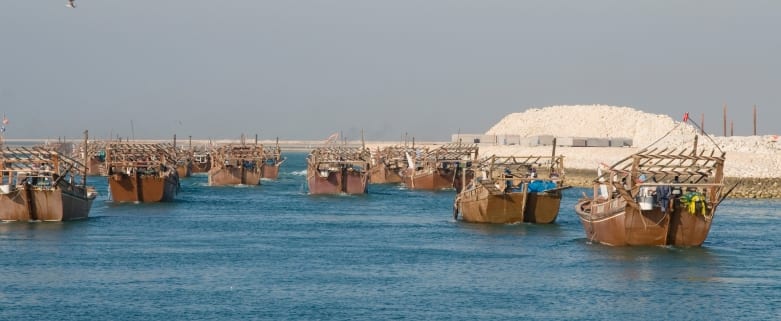There was a time when Yousif al-Alawi could cast a line straight into the sea and fish from the roof of his old family home.
Broken seashells are still visible in the material used to build the crumbling walls of Alawi’s house on Muharraq, an island adjacent to Bahrain’s mainland. But a landfill programme on Muharraq which also now hosts Bahrain’s international airport has long since moved the shoreline too far for roof-fishing.
The modernisation drive which built the airport and has made Alawi’s roof-fishing days a distant memory is only a fractional representation of the effects of an oil boom across the Gulf states that has seen most of them reclaim land off their coasts and build the mushrooming business towers that have drastically changed the landscapes of Gulf states.
Until recently little attention has been paid to the effects that that break-neck growth has had on the cultural heritage of a region which embraces both the spartan life of the desert nomad and the rich traditions of a sea-going fishing industry.
The island kingdom of Bahrain will partly address critics who say that progress is trampling traditions on Wednesday when it applies to the United Nations Educational, Scientific and Cultural Organisation (UNESCO) to have a project preserving its pearl diving traditions listed as a world heritage site.
The country first submitted the project as part of a tentative list of its natural and cultural heritage to the UNESCO in May 2008 and in January 2010 submitted the nomination file for the pearl heritage project.
Harvesting pearls was a major source of income for Bahrain and the region until the early 20th century when Japanese cultured pearls flooded world markets and oil was found.
“Our research has shown that income from pearl fishing in Bahrain was more than double that of all other Gulf states combined,” said Britta Rudolff, a heritage advisor to the Bahraini government.
At the moment, Bahrain’s tourist industry relies mainly on the millions of Saudis who cross a causeway from Saudi Arabia to enjoy the more liberal nightlife in the capital Manama, where alcohol, bars and cinemas abound.
Bahrain’s land surface grew 11 per cent between 1981 and 2007 and local fishermen regularly complain about land reclamation for property projects along the north coast that they see as threatening their livelihoods.
Bahrain’s pearl project will refurbish traditional houses, create a path to link fishing museums to a historic fort, restore some oyster beds protected by a buffer zone restricting fishing and allow for boat tours to the oyster beds where tourists can try out diving for pearls themselves.
Saeed Abdulla al-Khuzai, an advisor on natural heritage to the ministry of culture and information, said surveys had shown the oyster beds had a density of between 4 and 30 oysters per square metre. About five per cent contain pearls.
“They are in very good condition, the density of oysters is quite good”, he said.
Alawi’s old house is one of the last in Muharraq to boast a traditional wind tower which catches the slightest breeze and leads it as cooling wind into the interior, an air conditioning system that pre-dates home electricity.
While the project will not bring the shoreline back to Alawi’s house, he still hopes it will free him of the burden it has become after his family moved out a few years ago.
“I hope the government will buy it,” he said.
Reuters







